
In celebration of Earth Day, Clean Air Council will be tabling and/or in attendance at the following events. We hope to see you there!
Environatal Day at Bartram’s Garden | April 17th 10-2pm
Join Nature Momz at Bartram’s Garden for an organized group walk along the trail to discuss maternal health, air quality, and the impact of the environment on mothers and infants. Free to all and no registration is required.
In partnership with the Philadelphia Regional Center for Children’s Environmental Health, Clear Air Council, Nurturely and a Place for Ummi Maternity Care.
Spring Fest at Bartram’s Garden | April 19th 10-2pm
Join Bartram’s Garden for their annual spring celebration! Activities will include a guided tour of the Garden’s 19th-century flower garden, a youth-led block printing activity, hands-on natural dye activity, an annual plant sale, and so much more. Clean Air Council will be tabling at the event, so stop by to learn more about the smoke contamination issue at Bartram’s Garden.
SEPTA’s Earth Day Celebration | April 21st 11-2pm
SEPTAs Sustainability Department is hosting its annual Earth Day Expo. Check out SEPTAs Zero Emission Fuel Cell buses, learn more about SEPTA’s sustainability practices, and visit Clean Air Councils table to learn more about our transportation programs.
Earth Day Expo at Temple University | April 22nd 11-3pm
Join the Office of Sustainability and TSG Sustainability Committee for an Earth Day Expo to learn more about sustainability on campus through student involvement, departmental research, and action plan development. Clean Air Council will be tabling at the Expo, so stop by to learn more about the Council’s transportation programs.
Swissvale Community Garden Earth Day Cleanup | April 22nd 6-8pm
Join the Swissvale Community Garden to help clean out garden beds and prepare for the growing season. Clean Air Council organizers will be in attendance to discuss our composting program and how to start composting.
Mt. Lebanon Earth Day Event 2025 | April 27th 11-3pm
Join us for live music, vendors, henna art, yoga classes, a kids bike course, and so much more at the Mt. Lebanon Earth Day Event. Stop by Clean Air Councils table to learn more about our programs in Southwest Pennsylvania.

Clean Air Advocates Express Disappointment but Pledge to Continue Fight to Protect Communities from Pollution
FOR IMMEDIATE RELEASE: Tuesday, April 8, 2025
Harrisburg – A Pennsylvania government board voted today to delay a decision on whether to expand setbacks for fracking and drilling sites from local homes and schools to better protect local residents from air and water pollution.
The Environmental Quality Board, a majority of whose members serve in the administration of Governor Josh Shapiro, voted 16-3 to table a motion to consider an expansion of setbacks, even though the Pennsylvania Department of Environmental Protection had recommended moving forward. The board reviews and approves state environmental regulations.
“We are incredibly disappointed that the Environmental Quality Board voted not to consider our petition,” said Jen Duggan, Executive Director of the Environmental Integrity Project (EIP). “We will continue to make the legal and factual case to the board about the need for protective buffers and fight for these commonsense protections for Pennsylvanians.”
She added that the board made its decision to table the petition even though the Pennsylvania Department of Environmental Protection admitted that EIP and Clean Air Council had raised important legal arguments and provided the board with new health studies documenting harm to Pennsylvania communities from oil and gas operations.
“While our petition hangs in limbo, more gas wells will be drilled by peoples’ homes and schools, more undisclosed chemicals will sully our air and water, and more children will be sickened and hospitalized,” said Alex Bomstein, Clean Air Council Executive Director. “We need protective setbacks now to stop this public health emergency and we will do everything in our power to move them forward.”
On October 22, 2024, EIP and CAC filed a petition with the Environmental Quality Board, which reviews all regulations of the Department of Environmental Protection, asking the state to update and strengthen its setback requirements for fracking wells, which currently include a waivable 500-foot setback distance from buildings.
The allied organizations suggested a setback of at least 3,281 feet from any building and from any drinking water wells, among other proposals. During a presentation to the board that that was cut short by the motion to table, the organizations also provided documented evidence, in the form of dozens of peer-reviewed scientific studies, showing that a person’s proximity to fracking wells is associated with severe human health risks, including increased rates of cancer, hospitalization, and respiratory and neurological symptoms.
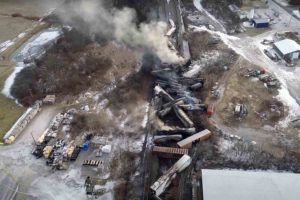
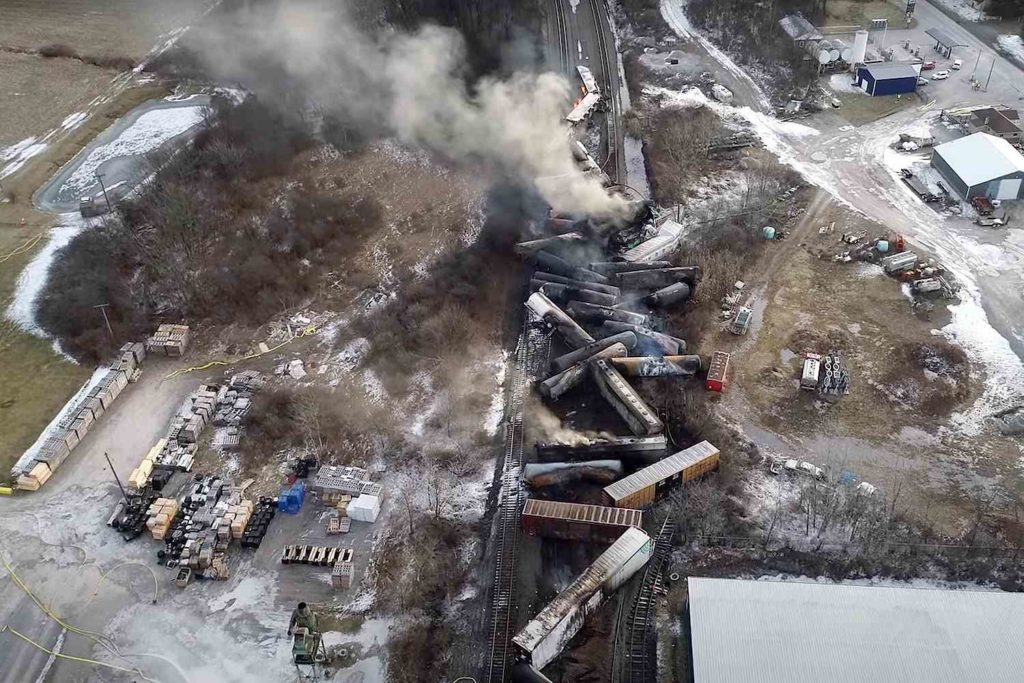
Written by: Hilary Flint
It’s been over two years since the East Palestine train derailment, and yet, every time another chemical disaster happens, I feel like I’m reliving it all over again. In the past few weeks alone, two major chemical incidents have struck Pennsylvania—an explosion at Parker Lord Corporation in Saegertown, near Erie, and a fire at SPS Technologies in Jenkintown, near Philadelphia. Each of these incidents, like East Palestine, serves as another devastating reminder of the risks posed by disaster-causing chemicals, not only to the environment, but to our health and safety.
I used to live in Enon Valley, Pennsylvania, a small town just over the Pennsylvania-Ohio border. When the Norfolk Southern train derailed in East Palestine on February 3, 2023, my family wasn’t in the official evacuation zone. But, toxins don’t stop at an imaginary line on a map. Norfolk Southern made the catastrophic decision to burn five tankers of vinyl chloride in a so-called “controlled release” which the NTSB questioned as even necessary, and which many would later see as the railroads profit-driven rush to get the train back up and running. At any rate, that decision changed everything for us.
We initially evacuated, then after being assured our home was safe, we returned. But within minutes of stepping inside, my eyes burned, my head pounded, and a strange, sweet chemical odor filled the air. Within days, my fingers and toes started turning purple. A few months later, my severe endometriosis, which had been suppressed for years with medication, suddenly flared up. My rheumatoid arthritis pain became unbearable. I had to increase my migraine medication twice.
I know now that vinyl chloride exposure can trigger Raynaud’s syndrome, the condition causing my fingers and toes to discolor. But back then, no one had guidance. No one told us how to protect ourselves from a chemical disaster of this magnitude. And still, to this day, residents in East Palestine, Beaver County, and beyond are left struggling to make sense of the long-term impacts.
Earlier this month, an explosion rocked the Parker Lord Plant in Saegertown, just outside Erie, injuring five Saegertown firefighters, one Edinboro firefighter, and seven LORD staff and forcing residents to shelter in place. The plant makes adhesives, coatings, and specialty materials used in the automotive, aerospace, industrial, and oil and gas industries.
Less than a week later, a massive fire broke out at SPS Technologies, an aerospace manufacturing facility, in Jenkintown, near Philadelphia, causing 60 employees to evacuate and prompting shelter-in-place orders. The fire luckily didn’t reach many of the hazardous chemicals stored on site. Pennsylvania DEP is continuing to monitor the area.
The full extent of chemical exposure from these two incidents remains unclear, but the immediate response from the government and Norfolk Southern has followed the same pattern as East Palestine: vague statements, insufficient testing, and the leaving in the dark of entire communities. The only certainty is that no one is safe as long as petrochemical infrastructure continues to operate.
According to the Oil and Gas Watch database, there are 233 petrochemical facilities operating in the United States. These facilities include infrastructure to transport, store, process, and refine petrochemicals from its raw oil and gas into more than 6000 products. Spilltracker, which tracks chemical disasters across the U.S., and reports that the U.S. averages one petrochemical incident every 3 days.
Each time a chemical disaster happens, the same questions emerge: What chemicals were released? Are residents safe? Do we need to evacuate? What are the long-term health risks? Too often, we don’t get real answers. Instead, we’re told, “Everything is fine.” But if there’s anything I’ve learned from my experience, it’s that “fine” is a lie.
So how do we protect ourselves when the systems meant to keep us safe keep failing?
How to Protect Yourself in a Chemical Disaster
If you find yourself in the midst of a chemical spill, fire, or explosion, it’s critical to act quickly. Here’s what you can do to protect yourself and your loved ones:
1. Stay Informed
- Keep your phone and backup batteries charged.
- Download emergency alert apps like FEMA’s and sign up for local emergency notifications.
- Follow reputable news sources and your county’s emergency management page for real-time updates.
- Keep numbers of who to call to report accidents or get answers from: local, state and national emergency management services.
2. Shelter in Place When Advised
- Close all windows, doors, and chimney vents tightly.
- Turn off HVAC systems and any outside air intakes.
- Use damp towels to seal door gaps if the air smells “off” or irritates your lungs.
- Do NOT rely on N95 masks alone—most chemical exposures require more protective respirators, like organic vapor cartridges.
- Follow boil water and do-not-drink water advisories.
3. Be Prepared for Evacuation
- Keep a “go bag” with essentials, including medications, masks, bottled water, and important documents.
- If you have a personal or family emergency preparedness plan, especially for sheltering in place, be sure you have enough drinking water, non-perishable food, and any necessary medical supplies for each member of your household, including service animals and pets.
- Know your evacuation routes ahead of time—many disasters happen in areas with limited road access.
- If you evacuate, document everything: take pictures, save air quality reports, and track symptoms in case you need to file claims later.
4. Monitor Your Health
- Pay attention to new or worsening symptoms like headaches, nausea, skin rashes, breathing issues, or neurological effects.
- If you seek medical care, insist on documentation that includes potential environmental exposure.
- Blood and urine tests for chemical exposure are often time-sensitive, so ask your doctor about testing options ASAP.
5. Demand Accessibility
- When the crisis has passed, local authorities will issue an all-clear announcement and provide any additional information or instructions for staying safe. Keep in mind that elected officials and corporations alike are often quick to declare an area “safe” without considering the diverse needs of its community members – including those who are disabled.
- Under the Americans with Disabilities Act (ADA), individuals with disabilities have the right to receive information in formats that are accessible to them. This includes emergency alerts, evacuation orders, and other critical communications that must be provided in formats such as large print and Braille, or through sign language interpreters, as necessary.
- The ADA and Section 504 of the Rehabilitation Act mandate that emergency shelters, medical services, and disaster recovery programs must be accessible to people with disabilities. This means shelters should accommodate mobility devices and service animals, and offer accessible transportation to those who need it.
6. Demand Accountability
- Ask local officials for transparent air, water, and soil testing data.
- Push for independent testing from non-governmental sources when possible.
- Get involved in community organizing efforts to advocate for stronger safety regulations and emergency response measures.
For a detailed preparation guide and list, check out this report from the People over Petro Coalition.
What happened in East Palestine should have been a wake-up call. Instead, the cycle continues—one disaster after another, with the same government failures and corporate cover-ups. But we are not just statistics in a report. We are living, breathing people whose health and futures are being sacrificed for profit.
If you take away anything from my story, let it be this: Do not wait for someone to tell you to protect yourself. Do your own research. Learn where there is active infrastructure, facilities, junkyards, and rail lines around you. Make your own safety plan. Trust your own body. Know that when disaster strikes, those in power will prioritize their bottom line. It’s up to us to prioritize each other.
Hilary Flint is the Director of Communications and Community Engagement for Beaver County Marcellus Awareness Community, PA Field Organizing Manager for Center for Oil and Gas Organizing, and a Mutual Aid + Disaster Response Steering Committee Member for Break Free From Plastic. Her expertise spans critical issues, including health harms generated by the petrochemical buildout, natural gas extraction, plastic pollution, railway safety, and overarching corporate greed. As a cancer survivor, chronic illness warrior, and community member affected by the East Palestine train derailment and chemical disaster, Hilary is committed to advocating through the lens of disability justice and supporting communities through mutual aid.

WASHINGTON, D.C. (March 13, 2025) – Yesterday, Environmental Protection Agency (EPA) Administrator Lee Zeldin announced that EPA will “reconsider” dozens of environmental protections. EPA’s rules protect millions of Americans from pollution and are crucial to averting the most devastating effects of the climate crisis. A key action on the chopping block is the Endangerment Finding – which is critical to regulating greenhouse gases and curbing climate change.
In 2009, after being ordered by the United States Supreme Court to fulfill its duties, EPA comprehensively reviewed climate science and arrived at an inescapable and long-understood conclusion: emissions of greenhouse gases like carbon dioxide are endangering public health and welfare by driving climate change. This determination, known as the “Endangerment Finding,” triggered EPA’s legal duty and provides its corresponding authority to regulate greenhouse gas emissions. The supporting scientific evidence has since grown exponentially stronger while Americans and the global community have suffered from the increased deadly fires, storms, floods, droughts, heat waves, and other impacts from climate disruption.
Yet now Zeldin’s EPA seeks to abdicate its duties to protect Americans from this threat to our health, economy, and national security by withdrawing the Endangerment Finding and vital environmental regulations. By denying the reality all around us and falsely declaring that greenhouse gases do not threaten human health, EPA would no longer be required to regulate them.
Alex Bomstein, Clean Air Council Executive Director, issued the following statement:
“Scientists have known that greenhouse gases cause climate change since the 1800s, and we are all now living through the wildfires, floods, and other climate chaos that generations of unchecked climate pollution have sowed. EPA’s attempt to reverse the Endangerment Finding is like declaring that tobacco doesn’t cause cancer and alcohol is fine for your liver. In attempting to deny reality, the Trump EPA wants to abandon efforts to protect us from the defining crisis of our time. We can’t let them do that.”
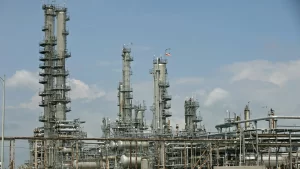
PHILADELPHIA, PA (March 12, 2025) Today, Clean Air Council received notice that our EPA grant to monitor air quality and protect residents from harmful pollution from the Delaware City Refinery (DCR) in Delaware City, DE was terminated. The project works to reduce health conditions like asthma and cancer that can be caused by air pollution from the DCR while also establishing a community-driven disaster response network in the neighborhoods surrounding the DCR in all directions, which could prevent potential harm to the health and safety of residents. The rationale EPA provided for canceling this funding is that it is inconsistent with agency priorities to support “programs or organizations that promote or take part in diversity, equity, and inclusion (“DEI”) initiatives” or “environmental justice initiatives.
Clean Air Council Executive Director Alex Bomstein issued the following statement:
“Environmental justice initiatives are critical to ensuring that everyone, regardless of their race, income, or background, has equal access to a clean and healthy environment. The termination of this program will have real life impacts for those in Delaware City being exposed to harmful pollution every day. Despite this termination notice, we are doing everything we can to continue this fight for Delaware City and all the communities we serve.”
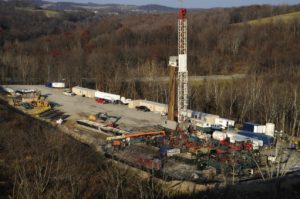
PENNSYLVANIA (June 21,2024) – The U.S. Environmental Protection Agency (EPA) and U.S. Department of Energy (DOE) announced today, June 21, the availability of $850 million in funding for projects led by agencies, tribes, states, communities, and industry that will monitor and reduce methane emissions from the oil and gas sector. Potentially-funded projects can help small operators monitor methane emissions so that leaks can be better quantified and repaired in a timely manner. The funding will also aim to create collaborative monitoring efforts between frontline communities and equipment providers, so that impacted residents will have better access to empirical data and a role to play in the air monitoring process. Overall, this funding will help states and tribes reduce methane emissions to comply with the waste emissions charge and the U.S. EPA methane rule published this past spring.
This announcement is part of EPA’s Methane Emissions Reduction Program (MERP), which was authorized under the Inflation Reduction Act of 2022. MERP provides financial and technical assistance as well as new regulations that will reduce pollution – including greenhouse gases such as methane, volatile organic compounds, and hazardous air pollutants – from the oil and gas sector. The funding made available today will build on the $350 million awarded to states last December, of which Pennsylvania received nearly $44.5 million for the plugging and monitoring low-producing conventional wells.
Matt Walker, Clean Air Council Advocacy Director issued the following statement:
“President Biden has already taken serious policy actions that will guide Pennsylvania and other states to significantly cut methane pollution from the oil and gas industry to help meet our climate goals. Today’s funding announcement builds on those solid policies with major investments for cutting edge methane-reducing technologies, and air monitoring that will provide accurate data to frontline communities. These efforts will better protect the health of Pennsylvania residents and help curb climate change.”
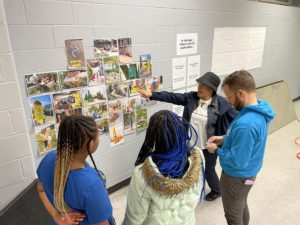
Clean Air Council, Tiny WPA, and Amber Arts and Design are gathering community inspiration, creativity and imagination to re-envision four Cobbs Creek Park entrances between Spruce St and Florence Ave. The goal of this project is to encourage community members to explore the park and trail at safe crossings, offer new play and learning spaces for children, and connect residents to park programming and activities.
This project follows years of community advocacy surrounding dangerous driving behavior and an absence of pedestrian infrastructure along Cobbs Creek Parkway. Cobbs Creek Park residents reported feeling unsafe walking, biking, and driving near the Parkway, creating a barrier to access the park and trail. Community demands for safer roadway conditions were finally answered in 2021 by the Streets Department and PennDOT’s Highway Safety Improvement Project, which installed life saving road safety measures including new guard rails, traffic signals, speed cushions, and other traffic calming measures.

With new road improvements installed along the Parkway and additional safety improvements planned for the future, neighbors can more safely connect to Cobbs Creek Park. The Cobbs Creek Play Art Project aims to strengthen these connections by creating an overt welcome to the park and trail and inviting residents to have their fun. These sorts of inviting infrastructure, signage, and safe spaces follow recommendations from the Equity of Access to Trails Study, which was informed by Cobbs Creek residents.
The Play Art Project will incorporate asphalt art murals painted on the paved trail, and play structures immediately adjacent in the park next to the trail. The murals will highlight safe entrances with bright colors and community inspired images, themes, and words. Play structures next to the trail will further connect residents to and from the park, and offer features that children can climb, jump, and interact with to create lasting links between neighbors and the benefits and resources of the park and trail. Both features will offer learning opportunities that build children’s literacy related to the nature found in the park.
Three community workshops were held in the Spring of 2024 to identify locations, ideas, and themes for the project’s design inspiration. Workshop activities included Lego building, image voting, theme identification, collective poetry, location selection, and group mural drawings in order to identify community themes and subject matter for the designers to draw inspiration from.
Over the Spring of 2024 the project team sorted through resident input and feedback collected through the workshops and landed on final project locations and themes. Several themes emerged from workshops and survey’s with three guiding focuses for the design including active play, nature, and seating. The design will include child age appropriate connections to nature that highlight native plants, animals, creek/stream and trails that can be found within the park. The project will also include active play and rest areas that have elements of climbing and various forms of balancing. Four locations were identified for the project including Cedar Ave, 61st, Thomas Ave, and Florence Ave along Cobbs Creek Parkway/63rd St. The Play Art Project will begin design, permitting and fabrication in Summer of 2024 with installation due in Fall of 2024.
The Cobbs Creek Park Play Art Survey is open through June 1st, 2024 for Cobbs Creek Park area neighbors to inform the project. To learn more about the Cobbs Creek Play Art Project contact Will Fraser at wfraser@cleanair.org. Many thanks to KABOOM! And William Penn Foundation’s Play Everywhere Philly Challenge Grant funding for making this project possible.

WYALUSING, Pa. — Late Friday, in response to data requests from the Federal Energy Regulatory Commission (FERC), Delaware River Partners and Bradford County Real Estate Partners confirmed that they do not intend to cancel their Wyalusing liquefaction facility and Gibbstown export facility, despite the U.S. Department of Transportation decision last September to suspend authorization to transport LNG by rail car. The Wyalusing and Gibbstown facilities are part of a logistically and financially connected LNG export project contemplated by New Fortress Energy.
If constructed, the Fortress LNG export project will transport explosive LNG by truck, including through the densely-populated, environmental justice communities in eastern Pennsylvania and western New Jersey between Wyalusing, PA and Gibbstown, NJ for export overseas. The Wyalusing liquefaction facility will emit more than a million tons of climate-polluting greenhouse gases and hundreds of tons of toxic air pollutants each year.
The Sierra Club, Clean Air Council, and PennFuture successfully sued to halt construction on the Wyalusing facility in March 2022. Later that year, the Sierra Club and Natural Resources Defense Council filed a petition for a declaratory order urging FERC to exercise oversight over the Fortress LNG export project.
In response, the Sierra Club, Clean Air Council, and PennFuture issued the following statements:
“By continuing to pursue this dangerous LNG export project, Delaware River Partners, Bradford County Real Estate Partners, and New Fortress Energy are putting the lives of millions of Pennsylvanians and New Jerseyans at risk,” said Patrick Grenter, Sierra Club Beyond Dirty Fuels Campaign director. “The last thing we need is even more dangerous methane gas extracted from Pennsylvania, shipped through our communities by truck, and exported overseas — all while residents face worsening illnesses, higher healthcare costs, and increased energy bills caused by gas exports. This decision is unnecessary and reckless, and the Sierra Club is prepared to continue fighting this project until it is officially canceled.”
“The proposed scheme to make liquified natural gas in Northern Pennsylvania, ship it through our communities for hundreds of miles, and then export it to overseas markets from a facility on the shore of the Delaware River is absurd at best and deadly at worst,” adds Abigail M. Jones, Vice President of Legal and Policy at PennFuture. “Despite continued losses that prove just how unworkable this scheme is, these companies are now doubling down on a plan to deliver highly explosive LNG through some of Pennsylvania’s most vulnerable communities via trucks. Pennsylvanians will not benefit from this plan. We do not need more fossil fuel development; we need to focus our economic development priorities on the future: clean, renewable energy and green, sustainable industries.”
“The Wyalusing and Gibbstown LNG facilities promise to lock us into dirty air and millions of tons of climate-heating pollution for decades while raising energy prices at home,” said Alex Bomstein, Clean Air Council Executive Director. “This ill-conceived proposal has no place in our Pennsylvania and New Jersey communities. We will never stop fighting these dirty and dangerous LNG facilities.”
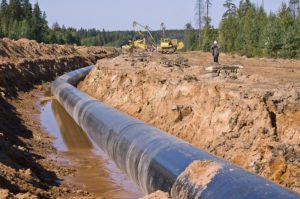
PENNSYLVANIA (February 27, 2024) – On Saturday, the Pennsylvania Department of Environmental Protection (DEP) published the final guidance on using underground boring technology (“trenchless” technology) such as horizontal directional drilling (HDD) to build gas pipelines and other underground utilities. The guidance lays out a roadmap to less-risky pipeline construction practices. The guidance stems from a legal appeal of Mariner East II pipeline permits by Clean Air Council, Delaware Riverkeeper Network, and Mountain Watershed Association.
Also announced last week, the Pennsylvania Public Utility Commission (PUC) released a final rulemaking intended to improve safety in the construction and operation of pipelines, such as the Mariner East lines, transporting hazardous liquids through Pennsylvania. Hazardous liquids pipelines will now be subject to Pennsylvania-specific regulations as well as federal Pipeline and Hazardous Materials Safety Administration (PHMSA) regulations. These new regulations come after an in-depth review of pipeline safety measures in Pennsylvania, prompted in part by a lawsuit filed by residents before the PUC. The “Safety 7” lawsuit alleged that the safety risks associated with the Mariner East pipelines violated residents’ rights. Clean Air Council filed as an intervenor in safety-related cases before the PUC, and supported residents in their advocacy efforts to gain greater public safety protections. The new regulatory framework corrects some of the prior loopholes and lessens the risks to residents of the Commonwealth.
“DEP’s trenchless technology guidance and the PUC’s hazardous liquids safety rule are some of the strongest and most protective in the country when it comes to safeguarding the public and the environment,” said Alex Bomstein, Clean Air Council Legal Director. “Our commonwealth is overdue for these protections as fracking runs rampant and the industry clamors for more pipelines for transport. The Council will continue to watchdog the gas industry and ensure that these rules are followed and the public is protected.”
“Because Mariner East largely does not transport gas for energy production but “natural gas liquids,” which are used mostly for plastic production, it fell outside of many of the rules governing gas lines,” said Melissa Marshall, Mountain Watershed Association Community Advocate. “This lack of oversight caused countless harms and we hope this guidance will prevent such catastrophic damage in the future.”
Delaware County resident Rosemary Fuller, who was involved in the Safety 7 case, stated that, “hazardous liquid pipelines put residents at risk, especially when they run through densely populated areas, next to schools and hospitals, or through areas where residents source their drinking water from private wells, which are impacted by HDD drilling. The DEP and PUC rulemaking is long overdue, and these new regulations must be strictly enforced.”
The latest spill on the Mariner East pipeline system was reported this week in Marsh Creek State Park in Chester County where drilling fluid used during construction of the pipeline once again rose up in a wetland and flowed into a tributary to Marsh Creek Lake.
“This is just one example of how the damage to the environment doesn’t end when the drilling ends,” said Chester County resident Christina DiGiulio, “these corporations need to be held fully responsible for their crimes.”

Environmental Protection Agency sides with Environmental Integrity Project, PennFuture, Clean Air Council and objects to U.S Steel Edgar Thomson’s Title V permit as it was not in compliance with the Clean Air Act
PITTSBURGH, PA, Feb. 12, 2024 – In another step to help protect Mon Valley residents from harmful air pollutants, the Environmental Protection Agency (EPA) has again sided with environmental groups by issuing an order objecting to an air quality permit issued by the Allegheny County Health Department (ACHD) to U.S. Steel on the basis that it was not in compliance with the Clean Air Act. This time, the EPA objected to the permit issued to U.S. Steel’s Edgar Thomson facility by ACHD in August 2023.
In September 2023, environmental groups submitted a petition to EPA requesting it object to the Title V air quality permit issued to U.S. Steel Edgar Thomson by ACHD. In the petition, environmental groups argued that the Title V permit did not include monitoring and testing requirements sufficient to assure compliance with multiple air quality emissions limitations for multiple emissions sources, and improperly eliminated certain emissions limitations.
On February 7, 2024, EPA issued an order granting all of the petitioners’ claims and objecting to the Edgar Thomson Title V permit on those grounds. In its order, EPA requires ACHD to revise the permit and/or permit record in accordance with its decision.
This marks the second occasion in recent months that environmental groups have successfully petitioned EPA to object to deficient Title V permits issued by ACHD to U.S. Steel facilities in the Mon Valley. In October, EPA issued a similar order granting the majority of petitioners’ claims relating to insufficient monitoring and testing requirements and objecting to the U.S. Steel Clairton Coke Works’ Title V permit issued by ACHD.
The U.S. Steel Edgar Thomson Plant is an iron and steel making facility with a history of noncompliance with air pollution regulations and a major source of air pollution in Allegheny County. Pollutants of concern emitted by the facility include particulate matter, sulfur dioxide, carbon monoxide, nitrogen oxides, volatile organic compounds, and hazardous air pollutants, among others.
“We are thrilled EPA ordered the Health Department to make all 10 changes we requested so that this massive polluter no longer has a permit full of loopholes,” said Lisa Hallowell, Senior Attorney with the Environmental Integrity Project. “The permit now must be revised to require monitoring to assure compliance with permit limits, which will benefit public health and the environment throughout the Mon Valley.”
“Ensuring that industry polluters comply with permit limits is necessary to protect Allegheny County residents from harmful air pollution,” said Angela Kilbert, Senior Attorney for PennFuture. “EPA’s order directs ACHD to ensure that this Title V permit has air quality monitoring and testing requirements sufficient to assure U.S. Steel Edgar Thomson operates in compliance with its emissions limits.”
“Mon Valley residents shouldn’t have to put up with some of the worst air in the country,” said Alex Bomstein, Clean Air Council Legal Director. “Through air quality monitoring and testing requirements, EPA’s orders will help to ensure that the facility operates within the law, which is key to protecting residents from harmful pollution.”

